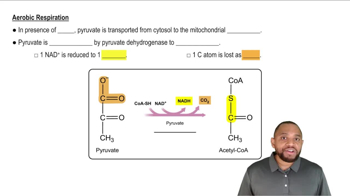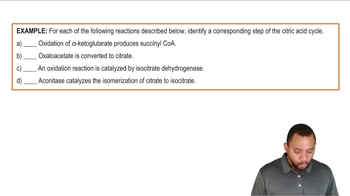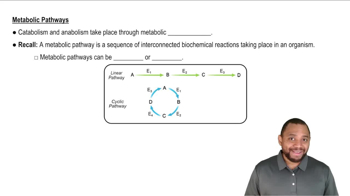Textbook Question
Which of the following molecules will produce the most ATP per mole?
a. glucose or maltose
 Verified step by step guidance
Verified step by step guidance Verified video answer for a similar problem:
Verified video answer for a similar problem:



 1:49m
1:49mMaster Pyruvate Oxidation Concept 1 with a bite sized video explanation from Jules
Start learning